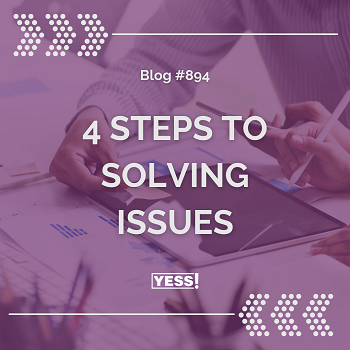Do you want solutions?
In sessions, I’ll be coaching a team while solving issues and they’ll stray from the topic at hand. They’ll dive into multiple competing discussions piling onto the issue while wasting precious time circling the issue, afraid to say what’s really at the core of it all.
A simple process clears this up.
When you use it, your time becomes maximized, you solve more, and get to the heart of things. It’s four simple steps:
- Begin by asking “whose issue is this?” When you begin here, often everyone looks around the room. Until you know who you’re helping, the dialogue can only expand. Who will tee it up? One person. If there are other issues, from other people, note them and solve them separately (if needed – often they are superficial symptoms of the same issue).
- Ask “who are you talking to?” Doing this simplifies who focuses on being in the dialog. If you’re not named, help facilitate and keep the conversation focused; you will have the opportunity to weigh in later. If the “who” is not in the room, ask the person to take it to them directly and move on.
- Ask the person to “State the issue in one sentence.” It’s critical to pause and wait here. Do not allow more than one sentence or you’re off track immediately. This step requires discipline and will be the game changer. When people have only one sentence, they must simplify, dig, and say uncomfortable things. It focuses our attention and limits what we’ll discuss. Most people dislike this, it’s unfamiliar. They can’t politic or persuade, they must offer a focal point for dialog. It’s magic and it works.
- Last, and almost as critical as step 3, ask the same person “what do you want?” or “what would great look like?” Often, people won’t have this answer. Wait, it’s worth it. It becomes the outcome or goal of having the discussion. When you don’t know what result you’re seeking, it’s difficult to have efficient discussions.
While step 3 offers the origin, step 4 offers the outcome. When you focus dialog this way, solutions are readily available, and stories, examples, and diatribes subside.
It’s not easy, but it’s worth it.
